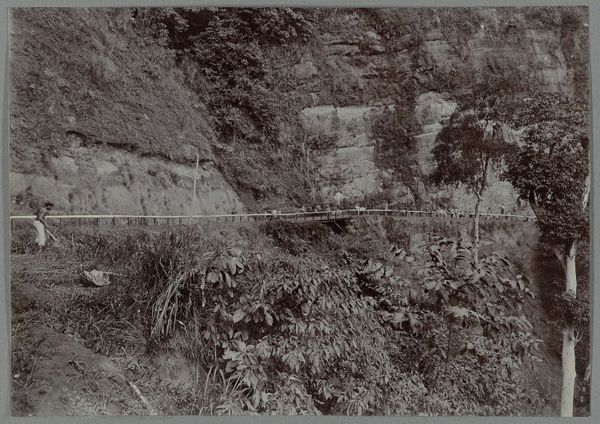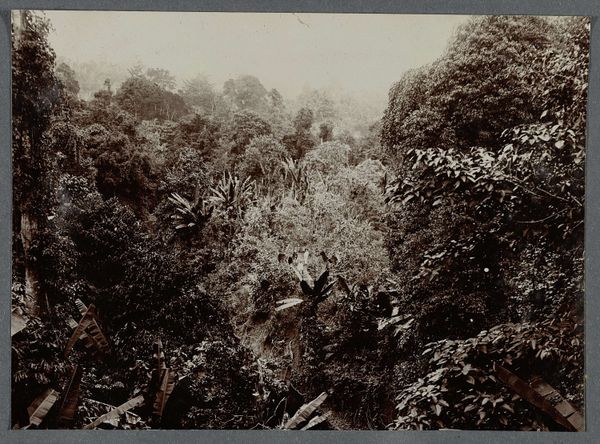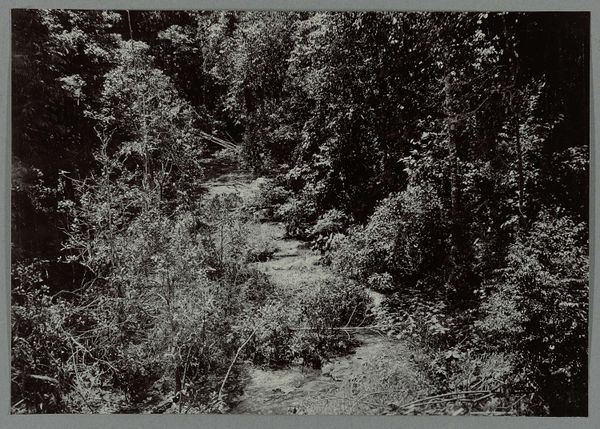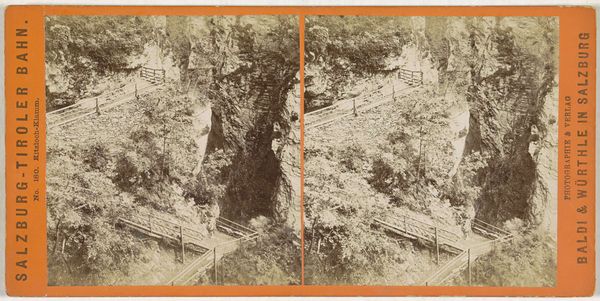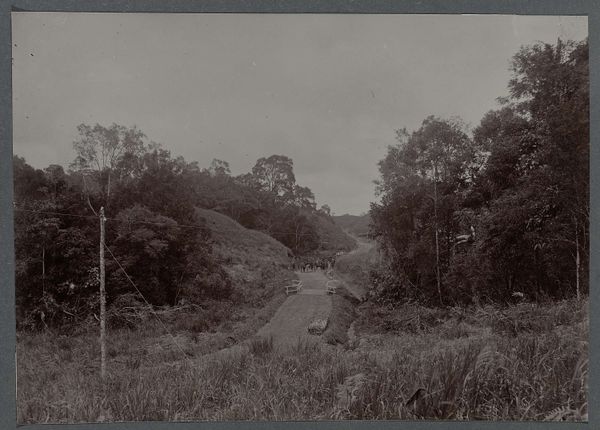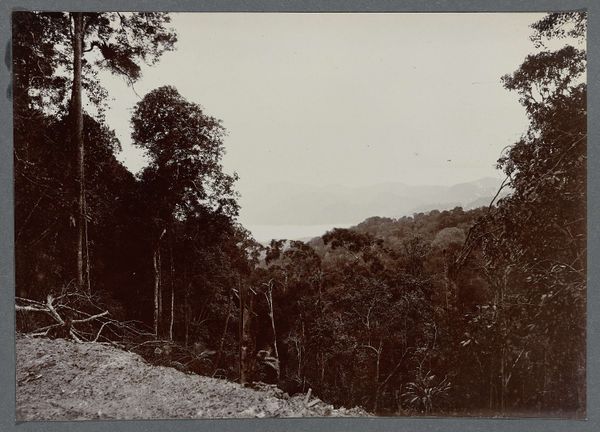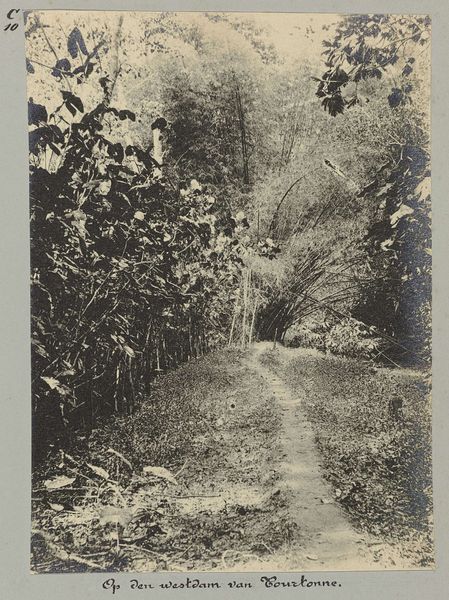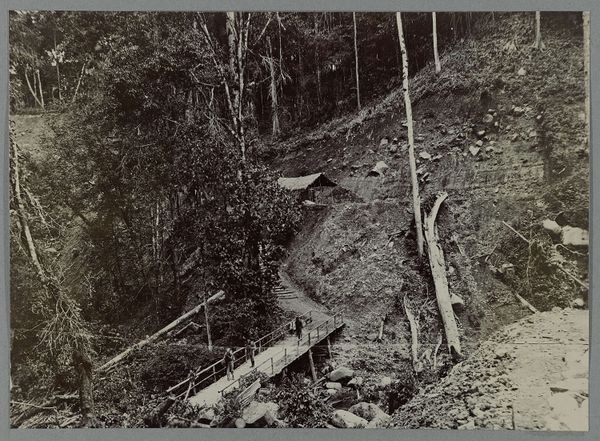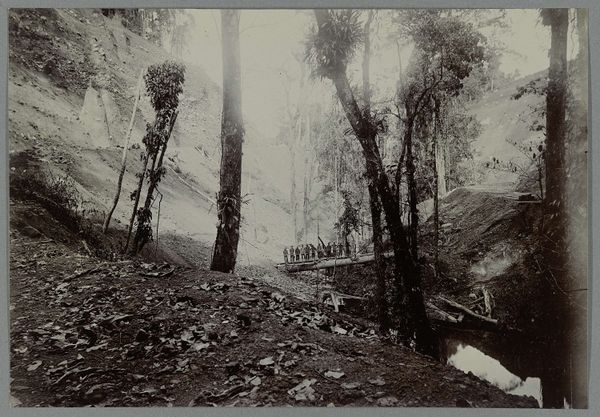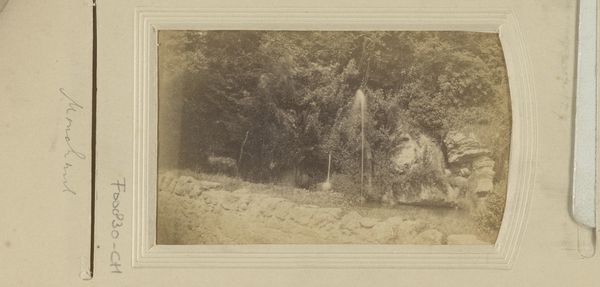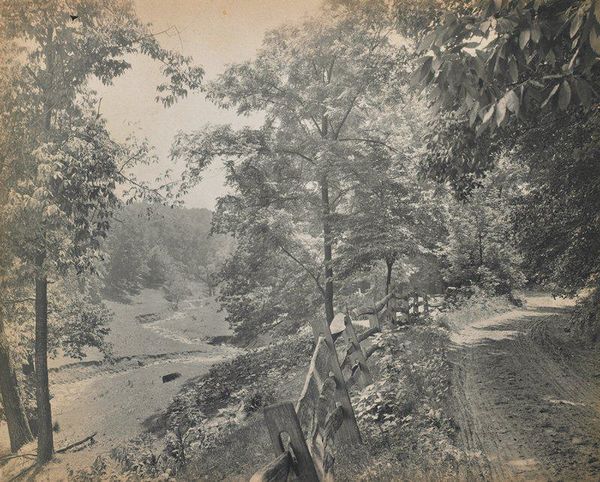
photography
#
pictorialism
#
landscape
#
photography
#
realism
Dimensions: height 138 mm, width 200 mm
Copyright: Rijks Museum: Open Domain
Editor: This photograph, called "Bergravijn," dating from between 1903 and 1913, really strikes me as incredibly immersive. It pulls you right into the scene with its lush details. What is your initial impression when viewing this? Curator: The romantic mood is certainly palpable, aligning it with the Pictorialist movement. It is a staged and subjective approach which sought to elevate photography to art. What might seem today a purely aesthetic choice in fact reflected the ambition to counteract the widespread use of photography in service of colonial and ethnographic projects of the time. Do you see what is not being depicted? Editor: I notice that there are no people included, even though it feels like a space that would naturally include people. Is the absence of human figures a political decision? Curator: Precisely. Consider the historical context. This image emerges during a period of intense colonial exploitation of natural resources. By consciously omitting figures, "Bergravijn" steers clear of colonial narratives that often framed local populations as part of the landscape, available for resource extraction and exploitation. This makes the representation of nature more deliberate, imbued with a subtle commentary on land use and possession. Editor: That is very insightful, I never thought about it like that. It gives an alternative to dominant representations of landscape during that time. Curator: And in thinking about this type of approach in art history, where might one consider further investigating for a point of comparison? Editor: Maybe looking into other contemporary art movements that also challenged the colonial gaze, for instance? This discussion made me realize how a seemingly straightforward landscape can be loaded with socio-political meaning! Curator: Exactly. Understanding how art both reflects and challenges prevailing power structures really enriches the experience of viewing it.
Comments
No comments
Be the first to comment and join the conversation on the ultimate creative platform.
